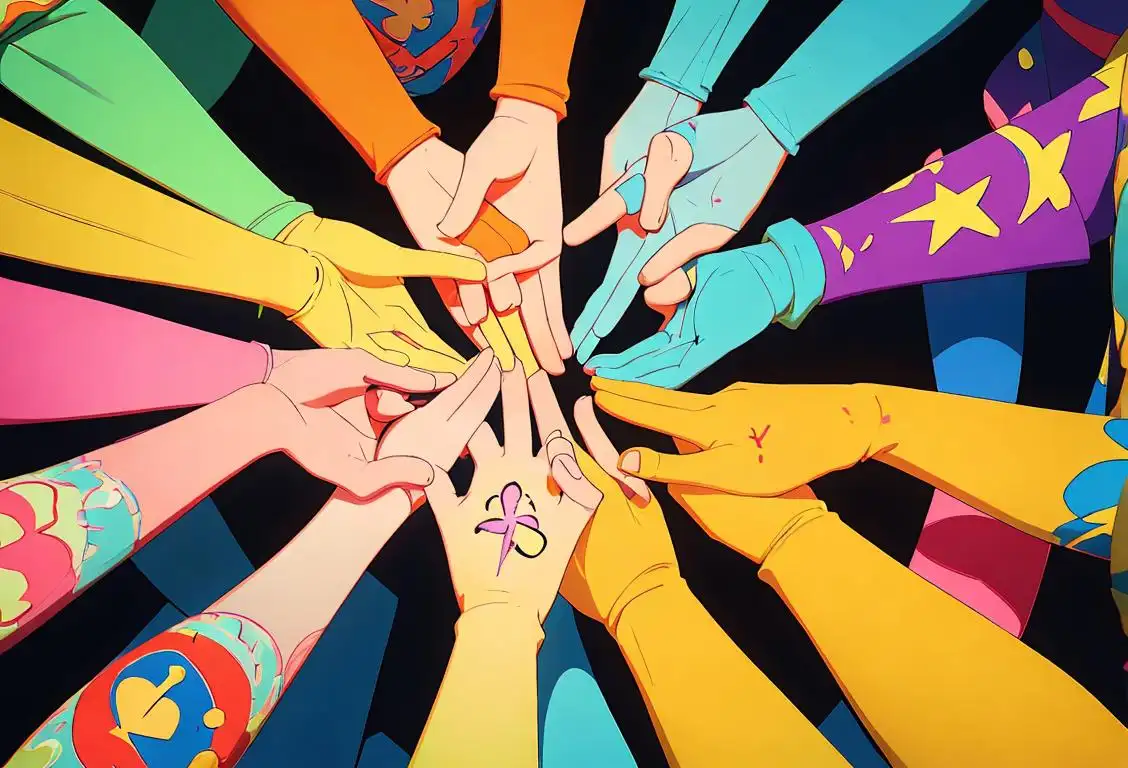National Laundry Day

Welcome to the grand world of fabric freshness, detergent decisions, and spin cycles! National Laundry Day, actually a thing, is the day we all come together to raise a smile in the face of duvet changes and pesky socks that disappear into the abyss!
When is Laundry Day?
It's national laundry day on the 16th April.
The History of National Laundry Day
Ding dong! You hear that? That's the ring of your imaginary tumbler echoing through the virtual corridors of the internet! With a booming 2511 mentions and the height of its digital chatter falling on 16th April 2019, National Laundry Day is a clean whirlwind of fun that has been tumbling around the cyber skies for a few years now.
What Do We Do On National Laundry Day?
Although it’s not a traditional holiday with grand feasts and and elaborate parades, it’s a day to remember the joy there is in reaffirming our connection with cleanliness and maybe even folding fitted sheets achieved with ninja level finesse. From using DIY laundry detergents and being eco-friendly, to finally tackling that ever-growing mountain of soiled clothes, National Laundry Day comes bearing many surprises, often found in pockets.
Folding Fun into Laundry
We may buy odd socks in honor of those brave, brave socks who got lost in the epic saga of laundry days past. Or perhaps we even partake in the hallowed tradition of helping loved ones with their laundry. This day praises the sweet smell of fresh fabric and the unappreciated whitening power of baking soda! Hold onto your tumble dryer, because National Laundry Day is full of spins!
Conclusion:
Regardless of if you want to proclaim your undying love for fabric softener from the rooftops or if you’re simply thankful for having clean clothes, National Laundry Day is an acknowledgment towards this essential domestic task. So, grab your detergent of choice, put on your favorite laundry day tunes, and let's wash away!
History behind the term 'Laundry'
3000 BC
Ancient Beginnings
In ancient civilizations, people relied on rivers and streams for their daily water supply. The act of washing clothes was born out of necessity, with early humans recognizing the importance of cleanliness and hygiene. They would beat their garments against rocks or rub them together to remove dirt and stains.
2000 BC
Early Handwashing Tools
As civilization progressed, early handwashing tools began to emerge. Ancient Egyptians utilized wooden paddles called "washing bats" to agitate the clothes in water, helping to remove dirt more effectively. This marked the first step towards creating tools specifically designed for laundry purposes.
1660
The Laundry Industry
During the 17th century, the laundry industry began to take shape. Public laundries, known as "wash-houses," started appearing, providing laundry services for those who could afford them. These wash-houses were often built near rivers or lakes, utilizing running water for washing clothes on a larger scale.
1797
The First Washing Machine Patent
In 1797, Nathaniel Briggs obtained the first patent for a washing machine in the United States. His invention used a wooden tub, a rotating cylinder, and a crank system to agitate the clothes. Although crude compared to modern machines, this marked a significant leap forward in laundry technology.
1858
Modernization and Mass Production
In 1858, Hamilton Smith patented the rotary washing machine. This innovative design utilized a rack-and-pinion mechanism to rotate the drum, making it easier and more efficient to wash clothes. The introduction of ironing machines and wringers further revolutionized the laundry industry, allowing for increased speed and productivity.
1884
The Term "Laundry"
The term "laundry" originated from the Old French word "lavanderie," which referred to a place where clothes were washed. It became widely adopted in the English language during the late 19th century. With the growing significance of specialized establishments and services dedicated to washing and cleaning garments, the word "laundry" encompassed both the act of washing clothes and the places where it was done.
Did you know?
Did you know? Washing clothes was considered a luxury in the 18th century and most clothing items were worn for a considerable amount of time before being washed!Tagged
awareness fun loved ones home cleanlinessFirst identified
16th April 2015Most mentioned on
16th April 2019Total mentions
2511Other days
Laundry Day
Cheese Pizza Day
Suicide Prevention Day
Medal Of Honor Day
Guac Day
Foundation Day
Pumpkin Day
Memorial Day
Cancer Survivors Day
Compliment Day








